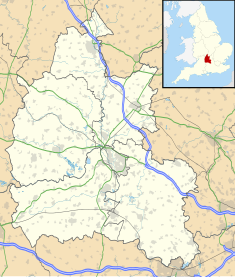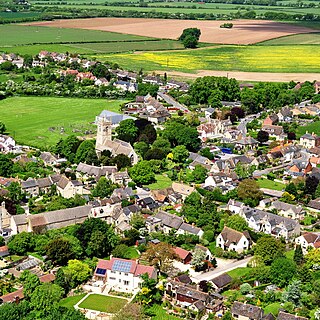
Oxfordshire is a ceremonial county in South East England. The county is bordered by Northamptonshire and Warwickshire to the north, Buckinghamshire to the east, Berkshire to the south, and Wiltshire and Gloucestershire to the west. The city of Oxford is the largest settlement and county town.

St Stephen's House is an Anglican theological college in Oxford, England. From 2003 to 2023 it was a permanent private hall of the University of Oxford.
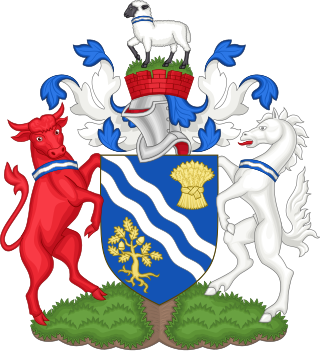
Oxfordshire County Council is the county council for the non-metropolitan county of Oxfordshire in the South East of England. Established in 1889, it is an elected body responsible for most strategic local government services in the county.

Deddington is a civil parish and small town in Oxfordshire about 6 miles (10 km) south of Banbury. The parish includes two hamlets: Clifton and Hempton. The 2011 Census recorded the parish's population as 2,146. Deddington is a small settlement but has a commercial centre including a market place, which hosts a popular monthly farmer’s market. It has been a market town probably since the 12th century. One of the Hundred Rolls of King Edward I from 1275–76 records Deddington as a borough. It has a deli, coffee shop, restaurant, three pubs and a town hall. Its football team is called Deddington Town FC.
Wheatley is a village and civil parish in Oxfordshire, about 5 miles (8 km) east of Oxford. The parish includes the hamlet of Littleworth, which is immediately to the west of Wheatley village. The 2011 census recorded the parish population as 3,913.
Bullingdon Rural District was a rural district in Oxfordshire, England from 1932 to 1974, covering an area to the south-east of the city of Oxford.
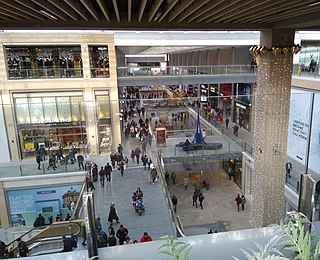
Westgate Oxford is a major shopping centre in Oxford city centre, England, that was extensively remodelled and extended between 2016 and 2017.

Park End Street is a street in central Oxford, England, to the west of the centre of the city, close to the railway station at its western end.

St John the Evangelist Church is a non-parochial church on Iffley Road in Oxford, England. It was built as the community church of the mother house of the Anglican religious order known as the Society of St. John the Evangelist. Since 1980 it has served also as one of the college chapels of St Stephen's House, Oxford.
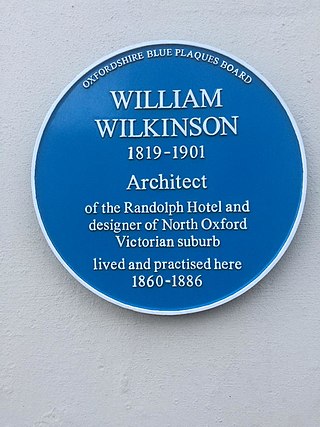
William Wilkinson (1819–1901) was a British Gothic Revival architect who practised in Oxford, England.

New Road is a street in west central Oxford, England. It links Park End Street and Worcester Street to the west with Queen Street and Castle Street to the east. To the south is Oxford Castle and the former Oxford Prison, now a Malmaison hotel. To the north is Nuffield College, a graduate college of Oxford University. At the eastern end on the south side is New County Hall, the headquarters of Oxfordshire County Council.
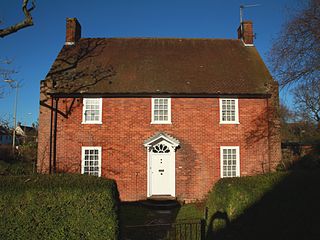
Thomas Lawrence Dale, FRIBA, FSA was an English architect. Until the First World War he concentrated on designing houses for private clients. From the 1930s Dale was the Oxford Diocesan Surveyor and was most noted for designing, restoring, and furnishing Church of England parish churches.
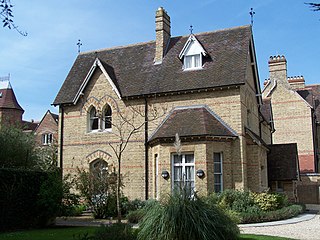
Frederick Codd was a British Gothic Revival architect and speculative builder who designed and built many Victorian houses in North Oxford, England.
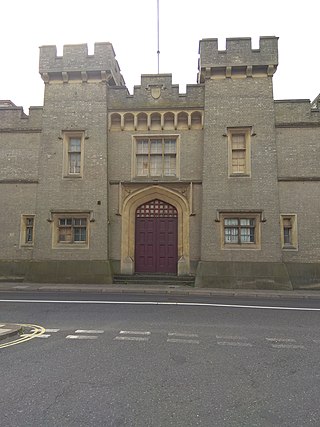
East Suffolk County Hall is a historic building located in St Helen's Street in Ipswich. The building, which was the headquarters of East Suffolk County Council until 1974 and then of Suffolk County Council until 2004, is a Grade II listed building.
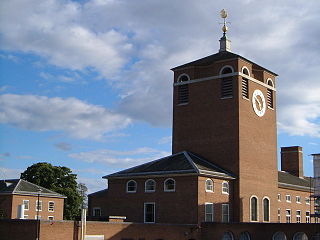
Devon County Hall is a municipal building in Topsham Road, Exeter, Devon, England. The building, which is the headquarters of Devon County Council, is a Grade II* listed building.

The following is a timeline of the history of the city, university and colleges of Oxford, England.

Essex County Hall is a municipal building in Market Road, Chelmsford, Essex: it is the headquarters of Essex County Council. Blocks C and D are Grade II listed buildings.
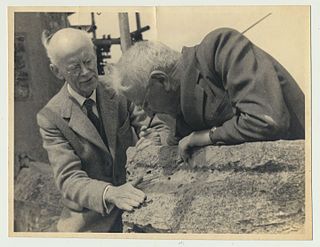
Thomas Rayson was an architect who practised in Oxford, England, and also a watercolourist.

The Shirehall is a municipal facility in Market Avenue, Norwich, Norfolk. It is a Grade II listed building.

County Hall is a municipal building in Cross Street, Beverley, East Riding of Yorkshire, England. County Hall, which is the headquarters of East Riding of Yorkshire Council, is a Grade II listed building.

